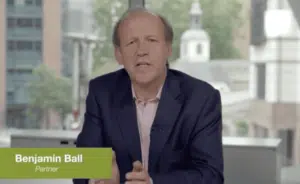“`html
Passive-aggressiveness is a subtle form of communication that can deeply affect our daily relationships. Whether as the sender or receiver, it plays a complex role in our interactions. Each Enneagram type reacts differently to this delicate dynamic.
Exploring how each personality handles these invisible tensions helps us to better understand and improve our interactions.
Type One: The Phlegmatic Martyr
Type Ones seek perfection and want to be direct and principled in their exchanges. However, when they hold back their frustrations, they exhibit passive-aggressiveness through martyr-like sighs and subtle reminders that create a climate of guilt.
Reception: Type Ones perceive passive-aggressiveness as a form of dishonesty and prefer clear and resolved conversations.
Type Two: The Manipulative Benefactor
Type Twos desire to be loved, and when their efforts are overlooked, their frustration expresses itself through acts of kindness that hide latent resentment. They sometimes use emotional traps disguised as generosity.
Reception: Type Twos see passive-aggressiveness as toxic, although they may unconsciously use it when they feel undervalued.
Type Three: The Vengeful Overachiever
Type Threes hate disorder and respond to passive-aggressiveness with precise and calculated actions, such as status updates or discreet demonstrations of success to assert their superiority.
Reception: They view passive-aggressiveness as a lack of professionalism and prefer to get straight to the point to achieve results.
Type Four: The Melancholic Soul
Type Fours express their passive-aggressiveness through artistic and emotional means, such as cryptic texts or melancholic playlists, seeking to capture and express their deep feelings.
Reception: They perceive passive-aggressiveness as a form of emotional nuance, often using creative means to express what they feel.
Type Five: The Discreet Observer
Type Fives avoid drama by withdrawing and using silence as a weapon, creating emotional distance to manage their frustration without direct confrontation.
Reception: They find passive-aggressiveness confusing and prefer clear and direct communication, avoiding emotional subtext.
Type Six: The Anxious Loyalist
Type Sixes express their passive-aggressiveness through loyalty tests and indirect questions, reflecting their need for security and trust in relationships.
Reception: They perceive passive-aggressiveness as a sign of instability, constantly seeking clarity and loyalty in their interactions.
Type Seven: The Distracting Diplomat
Type Sevens flee confrontation through humor and distraction, turning tensions into opportunities to maintain a light and positive atmosphere.
Reception: They find passive-aggressiveness boring and prefer to resolve conflicts quickly to return to enjoyable activities.
Type Eight: The Direct Aggressor
Type Eights have no patience for passive-aggressiveness, preferring direct and intense communication that reflects their determined and honest nature.
Reception: They view passive-aggressiveness as a weakness and value blunt honesty in exchanges.
Type Nine: The Sweet Stone
Type Nines avoid conflict by withdrawing emotionally, creating an atmosphere of outer peace while struggling internally with their own resentments.
Reception: They absorb tensions without reacting openly, seeking to maintain harmony even at the expense of their own feelings.

Enneagram Types react differently to passive-aggressiveness. Type Ones prioritize clarity and integrity, feeling passive-aggressiveness as a form of dishonesty. Type Twos, in search of approval, often interpret these behaviors as a lack of recognition, leading to frustration and sadness.
For Type Threes, achievement-oriented, passive-aggressiveness is seen as an obstacle to their effectiveness, arousing irritation and a desire to resolve conflict quickly. Type Fours, sensitive and introspective, feel this attitude as an emotional wound, amplifying their need for understanding and authenticity.
Type Fives, analytical and reserved, see passive-aggressiveness as an intrusion into their personal space, which may lead them to withdraw further. Type Sixes, security-seeking and loyal, interpret these behaviors as signals of instability, increasing their anxiety and need for certainty.
Type Sevens, optimistic and avoidant, reject passive-aggressiveness by preferring to divert attention to positive activities, which can mask their true feelings. Type Eights, assertive and direct, view this attitude as a weakness, reacting firmly to restore control. Finally, Type Nines, peaceful and accommodating, feel passive-aggressiveness as a disturbance to harmony, pushing them to facilitate a return to tranquility.

Passive-aggressiveness is a subtle but powerful behavior that can profoundly affect personal and professional relationships. Understanding how each type of the enneagram reacts to this type of behavior allows for better navigation in daily interactions and promotes healthier communication. The enneagram, a personal development tool, describes nine distinct personality types, each with its own defense mechanisms and emotional reactions. By exploring the feelings of different types in the face of passive-aggressiveness, we can identify effective strategies for managing these situations.
This article aims to detail the specific reactions of each type of the enneagram to passive-aggressiveness. Whether you are personally affected or interacting with someone of this type, understanding these dynamics can significantly improve the quality of your exchanges. Let’s review each type and discover how they perceive and react to passive-aggressiveness.
Type One: The Silent Martyr
Type Ones, known for their desire for perfection and strong sense of morality, generally try to avoid passive-aggressiveness. Direct and principled, they prefer clear and honest communication. However, when they feel frustrated or ignored, they may express their dissatisfaction in a passive-aggressive manner, through martyr-like sighs or subtle reminders of their expectations.
This may manifest in comments like “I thought everyone was following the list I left on the refrigerator.” Their intention is to express their frustration without direct confrontation. To learn more about the emotional depth of Type Ones, check out this article.
Type Two: The Generous Manipulator
Type Twos primarily seek to be loved and valued. When they feel their efforts are unrecognized, they may resort to passive-aggressiveness as a way to manipulate others into providing the desired attention. For example, they might say “I’m already taking care of everything for you” with a tone that reveals their resentment.
They often employ emotional booby traps disguised as kindness, such as saying “I’m here taking care of everything while you have fun.” This indirect method allows them to express their frustration without direct confrontation, which can complicate relationships. For an exploration of personalities and types in the enneagram, visit this article.
Type Three: The Strategic Overachiever
Type Threes are focused on success and the image they project. They hate disorder and passive-aggressiveness, as it can damage their reputation. When they feel underestimated, they respond with calculated and strategic reactions, such as impeccable status updates or subtle reminders of their accomplishments.
For example, a Type Three might say “Are you still working on that? I finished last week.” Their approach is effective and performance-oriented, avoiding direct confrontations while asserting their superiority. To understand how Type Threes handle conflicts, check out this article.
Type Four: The Emotional Artist
Type Fours express their emotions in rich and nuanced ways. Their passive-aggressiveness often manifests through poetic gestures and ambiguous messages, such as emotionally charged Instagram stories or melancholic playlists. For example, they might post “Some people never truly see you,” indirectly expressing their resentment.
For them, passive-aggressiveness is a form of creative expression rather than a conflict tool. They prefer to take a step back and analyze their emotions individually, rather than confronting others directly. This approach can be both poetic and disturbing for their interlocutors.
Type Five: The Reserved Observer
Type Fives avoid passive-aggressiveness by completely withdrawing from conflictual interactions. When annoyed, they prefer to disappear rather than engage in emotional confrontations. Their silence becomes a weapon, preventing them from providing explanations or closing discussions.
For example, a Type Five might ignore messages or disconnect from the Wi-Fi network to avoid an unpleasant interaction. They see passive-aggressiveness as a form of confusing emotional melody and prefer clear and direct communication. To explore the dark facets of Type Fives, visit this article.
Type Six: The Anxious Loyalist
Type Sixes are often anxious and seek security in their relationships. Passive-aggressiveness makes them distrustful and leads them to test the loyalty and reliability of others. They may pose ambiguous questions or express hidden concerns, like “You’re not mad at me, are you?”
They perceive passive-aggressiveness as a red flag and a threat to stability. Their approach often involves seeking clarifications, even if it means reintroducing tensions. To learn more about the most anxious types of the enneagram, check out this article.
Type Seven: The Distracting Diplomat
Type Sevens avoid confrontation and prefer to divert attention from passive-aggressiveness through light distractions or humor. When upset, they often resort to jokes or proposals for fun outings to dissipate tensions.
For example, a Type Seven might say “Let’s go get ice cream and forget what happened,” turning the situation into an opportunity for entertainment. This strategy allows them to maintain a positive atmosphere, but can sometimes mask their true feelings.
Type Eight: The Transparent Aggressor
Type Eights are direct and do not tolerate ambiguity. They reject passive-aggressiveness and prefer to express their frustrations clearly. However, when they attempt to be subtle, their natural intensity can make their passive-aggressiveness perceptible despite their efforts.
For instance, a Type Eight might say “Do what you want” with an intensity that implies a veiled threat. They view passive-aggressiveness as a weak manipulation and prioritize straightforward and powerful communication.
Type Nine: The Sweet Stone
Type Nines avoid conflicts and often use emotional withdrawal as a form of passive-aggressiveness. They prefer to remain silent and adopt an indifferent demeanor, masking their dissatisfaction behind polite smiles and a calm appearance. For example, they might say “It’s fine, really” while nurturing internal resentments.
Although they do not openly manifest their frustration, Type Nines feel passive-aggressiveness intensely and may endure considerable emotional tension without expressing it. This often leads them to question what they could have done differently.
Understanding the feelings of different enneagram types in the face of passive-aggressiveness allows for better management of interactions and promotes more harmonious relationships. By identifying the mechanisms unique to each type, it becomes possible to adopt tailored strategies to avoid misunderstandings and encourage authentic communication. Whether you are a Type One seeking to be more direct or a Type Seven preferring to divert tensions through entertainment, this in-depth knowledge is a valuable asset for improving your relational daily life.

“`html
FAQ
Q: How does the Type One of the enneagram react to passive-aggressiveness?
A: Type Ones generally avoid passive-aggressiveness because they prioritize directness and integrity. However, when they are frustrated, they may express their dissatisfaction through martyr-like sighs or “helpful” reminders that seem to disguise their real irritation.
Q: What is the typical reaction of Type Two to passive-aggressiveness?
A: Type Twos primarily seek to be loved and appreciated. When their generosity goes unrecognized, they may resort to emotional traps disguised as kindness, subtly expressing their resentment.
Q: How does Type Three manage passive-aggressiveness?
A: Type Threes hate disorder and passive-aggressiveness as it hinders their quest for performance. They often respond with effective actions and indirect messages that subtly highlight their frustrations without compromising their image.
Q: How does Type Four express passive-aggressiveness?
A: Type Fours use passive-aggressiveness to express their emotional nuances. They prefer creative means such as cryptic texts or ambiguous Instagram stories to communicate their need for space and their complex feelings.
Q: What is the strategy of Type Five in facing passive-aggressiveness?
A: Type Fives avoid drama and react to passive-aggressiveness by emotionally withdrawing. They prefer isolation and silence to manage their frustration, thus creating distance without direct confrontation.
Q: How does Type Six perceive passive-aggressiveness?
A: Type Sixes experience passive-aggressiveness as a red flag and often use their anxiety to test others’ loyalty. They interpret these behaviors as indicators of potential security or betrayal.
Q: What is Type Seven’s behavior toward passive-aggressiveness?
A: Type Sevens avoid confrontation and use humor or playfulness to divert from passive-aggressiveness. They prefer to resolve tensions by focusing on enjoyable activities rather than addressing conflicts openly.
Q: How does Type Eight react to passive-aggressiveness?
A: Type Eights do not accept passive-aggressiveness and prefer direct and straightforward communication. When confronted with this behavior, they may react with intensity that demonstrates their intolerance for subtle manipulations.
Q: What is Type Nine’s way of managing passive-aggressiveness?
A: Type Nines are peace-seeking and avoid direct conflicts. Faced with passive-aggressiveness, they emotionally withdraw and seek to maintain harmony, often questioning themselves rather than addressing the issue openly.











